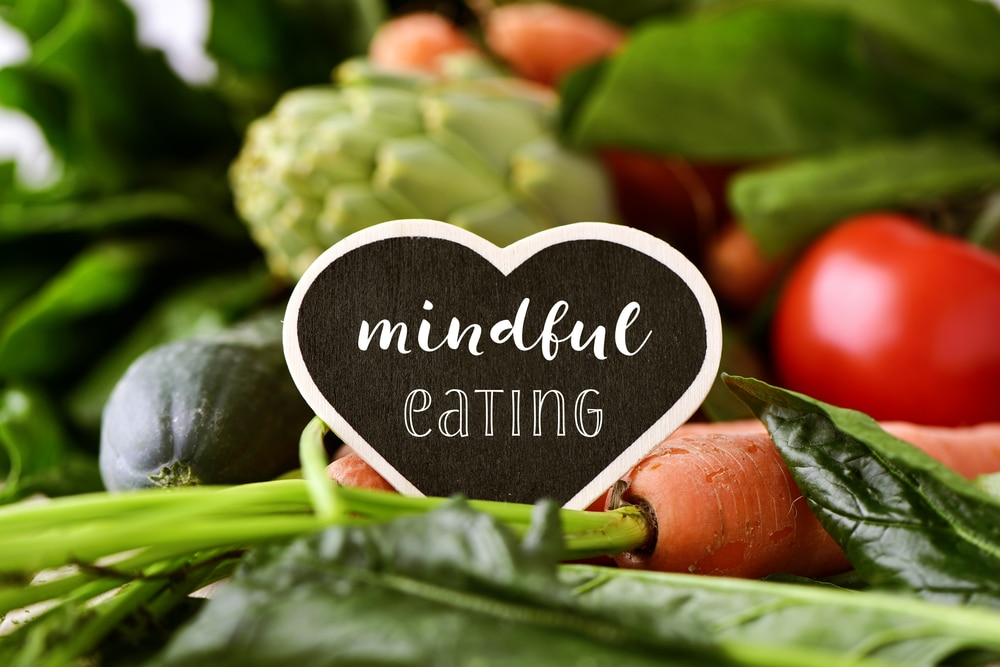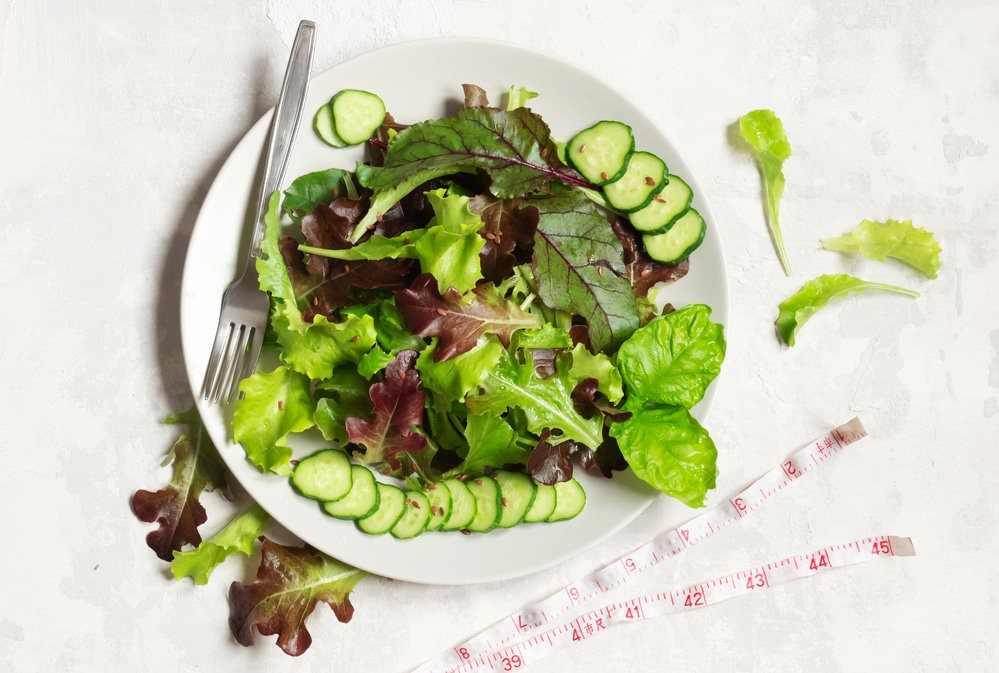Do you scarf down meals without even tasting them? Find yourself overeating unhealthy foods over and over? Feel out of control with food and eating habits?
Mindless eating is an epidemic affecting millions, but it doesn’t have to control your life any longer.
There is a simple solution that can change your relationship with food forever…but only if you take action now.
Mindful eating is the key to finally feeling in charge of your eating habits again. This powerful technique helps you tap into your senses, gain self-awareness, and make healthy food choices naturally.
No more compulsive overeating, emotional eating, or choosing junk foods and instant gratification over nourishment.
If you don’t take control now, you’ll continue sleepwalking through meal after meal, missing out on delicious flavors and continuing a vicious cycle of impulsive eating you feel powerless to stop.
But if you start eating mindfully today, you’ll discover a whole new way of savoring food that will awaken your senses and transform your health.
The time is now! Mindful eating is an essential life skill that provides immense benefits, but you have to commit to the practice.
Don’t let another year go by without gaining control over your eating habits. Here we walk you through the basic principles of mindful eating, as well as provide actionable tips you can start implementing right away.

What is Mindful Eating?
Mindful eating is the practice of being fully present and engaged with your food – consciously focusing on the tastes, textures, smells, colors, and even the sounds of each bite. It’s about learning to pay attention to internal cues like hunger, fullness, cravings, and emotions, rather than eating mindlessly out of habit or distraction.
The core principles of mindful eating include:
Eating Slowly and Without Distraction
Avoid multitasking and give your food your full attention. Turn off the TV, put down your phone, close your laptop. Chew slowly and thoughtfully, focusing on the sensory experience.
Noticing Physical Cues
Check in with your stomach occasionally to see if you’re still hungry. Notice signs that you’re full like a loss of appetite or feeling stuffed.
Being Aware of Thoughts and Feelings
Notice if you’re eating for reasons other than hunger, like boredom, stress, or emotions. Pause to check in with how you’re feeling.
Appreciating Your Food
Take a moment to appreciate the appearance, aromas, flavors, textures of your food. Feel grateful for the journey it took to get to your plate.
When you bring mindfulness into your eating habits, you gain control over food instead of letting food control you. Keep reading to learn simple techniques for eating mindfully!

How to Practice Mindful Eating
Transforming your eating habits takes commitment and practice, but the effort is well worth it. Here are some tips to get you started:
1. Set the Scene
Choose a quiet, distraction-free place to eat like your dining table. Turn off any screens and focus entirely on your food. Take a few deep breaths before starting your meal to center yourself.
2. Engage Your Senses
Before diving in, take a moment to appreciate your food with all five senses. Notice the vivid colors, aromatic smells, intriguing textures. Gently touch the food, breathe deeply, and even close your eyes to tune in.
3. Take Smaller Bites
Avoid big forkfuls, which make it harder to taste everything. Smaller bites let you slowly savor flavors and textures. Put your utensil down between bites to control the pace.
4. Chew Thoroughly
Chew each bite 20 to 30 times to bring out the full flavor. Set the pace with your breathing, inhaling and exhaling calmly between bites. Slowing down helps you tune in and notice subtleties.
5. Note Physical Cues
Check in periodically about your fullness level. Rate your hunger on a scale of 1-10. Pause halfway through the meal – are you still wanting more or feeling satisfied?
6. Minimize Distractions
Avoid reading, watching screens, or having intense conversations while eating. Multi-tasking divides your attention, preventing true mindfulness. Stay focused just on your food.
7. End Mindfully
Take a few deep breaths when you finish eating and tune in to your body. Feel the sense of satisfaction from nourishing yourself. Notice any lingering hunger or fullness. Avoid rushing off – allow yourself to transition slowly.

Bringing Mindfulness Into Your Daily Meals
Integrating mindful eating into your regular meals and snacks will take some adjustments. Here are helpful tips for building mindfulness into any dining situation:
Make Your Meals a Ritual
Bring a sense of ritual, care, and appreciation to your meals, even simple ones. Set a beautiful table, play relaxing music, light a candle – whatever nourishes your soul and elevates the experience. Say grace or take a moment to feel gratitude.
Focus on Your Food First
When eating with others, put more attention on your meal itself rather than the conversation. Focus on tasting and savoring for the first few bites, then chat.
Savor Your Beverages Too
Don’t just gulp your drinks. Pause frequently to swirl, smell, and mindfully taste each sip. Make this a soothing ritual.
Go Screen-Free
Remove TV, phones, tablets, books from mealtimes. Just eat slowly and thoughtfully without outside distraction. You’ll discover new depths of flavor.
Make Weekday Breakfast Mindful
Instead of rushing through breakfast distracted, sit down and fully enjoy your food. Set your alarm 15 minutes earlier if needed. It’s worth starting the day centered.
Choose Healthy Foods You Love
Selecting nourishing whole foods you sincerely enjoy makes mindful eating effortless. Savoring every bite of a homemade salad is easier than forcing down fast food.
Discover New Foods Slowly
Try new flavors and cuisines cautiously, taking tiny bites. Let unusual foods gradually reveal themselves to you bite-by-bite. Suspend judgement.
Know When to Stop
Learn to recognize your “full” signals like stomach discomfort or low appetite. Pushing past full leads to regret, not satisfaction. Stop when your body says so.
Make Leftovers Special
Portion leftovers into a special dish, add a garnish or new seasoning. Eat in a different spot. Creative touches revive the experience.

Overcoming Mindless Eating Habits
Many of our ingrained eating habits contradict mindful eating, like eating hurriedly, constantly snacking, or overstuffing ourselves. It takes commitment to overcome complacent patterns and attitudes.
Identify Your “Mindless” Eating Triggers
Notice when you tend to veer into automatic eating like during work breaks, while cooking dinner, or in front of the TV. These are prime times to apply mindfulness.
Separate Eating From Activities
If you normally eat while watching TV or browsing your phone, try eating solo with no entertainment or devices a few times a week. Tune into the food without dividing your attention.
Re-Learn Satiety Signals
If you often overeat, start paying close attention to stomach signals of fullness and learn to stop when satisfied, not stuffed. Pause halfway through meals to check your fullness.
Control Food Cues and Portions
To avoid mindless overeating, keep healthy food portions in sight and put excess away. Lots of bowls of snacks lying around tempts unconscious grabs.
Eat Seated at a Table
Always eat while seated at a dining table, never standing up, walking, or driving. Table settings encourage slower, more civilized eating.
Make Water Your Default Drink
Stay well hydrated with water instead of habitually sipping calorie-filled beverages all day from giant mugs or bottles. Be more mindful about when you drink/eat.
Avoid Eating from Packages
Instead of mindlessly eating straight from a large bag or box, portion snacks into dishes. This creates a visual stopping point and pauses your eating.
Reframe Your Attitude
Let go of judgment, frustration, and negativity around eating. Food is meant to nourish. Reframe meals as pleasant rituals of self-care.
Mindful Eating Benefits
Embracing mindful eating has profound benefits beyond enjoying your food more. Here are some of the top perks:
You’ll Feel Satisfied with Smaller Portions
Eating slowly with full focus actually satisfies hunger faster, allowing you to feel full sooner and with less food. No more overstuffing!
You’ll Make Healthier Choices
Paying attention prompts you to pick whole, fresh foods that make you feel energized yet light. Junk food loses appeal when you really tune in.
You Can End Emotional Eating
You learn to differentiate physical from emotional hunger and find healthier ways to cope with feelings. Food stops being mindless self-soothing.
You’ll Discover New Flavors
Rushing through meals causes you to miss subtle tastes and textures. Slowing down unveils a world of nuance you’ve been missing.
You’ll Appreciate Food More
Each bite becomes a pleasurable gift when you eat gratefully. Meals feel celebratory rather than routine. You value food again.
You Can Break Unhealthy Habits
Mindful eating increases self-awareness, making it easier to recognize and stop detrimental patterns like bingeing or restrictive dieting.
You’ll Feel More in Control
Mindful eating puts you back in charge of food instead of the other way around. You can finally tame chaotic eating habits.
Start Enjoying the Little Things
The art of mindful eating opens up a new world of joy and healthfulness around your meals. Start applying presence and intention to your eating experiences. Savor each delicious bite as if it’s your last! This simple shift can sweeten your entire day.


